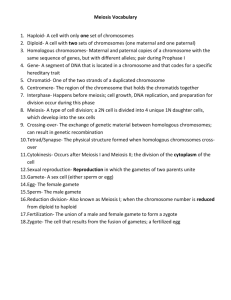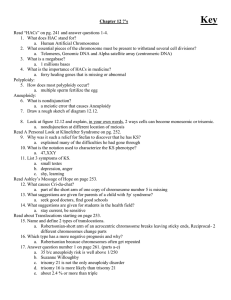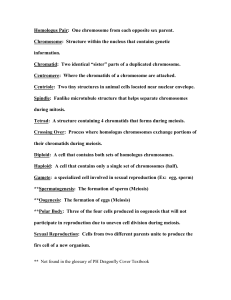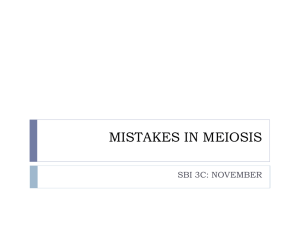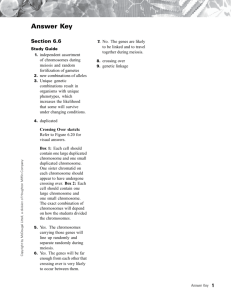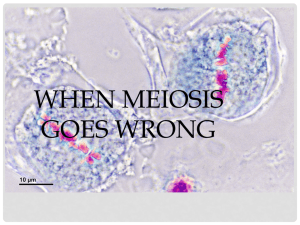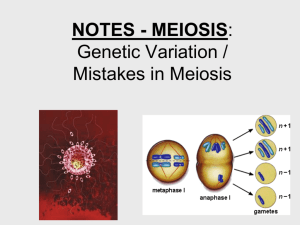Tuesday, March 2, 2010
advertisement
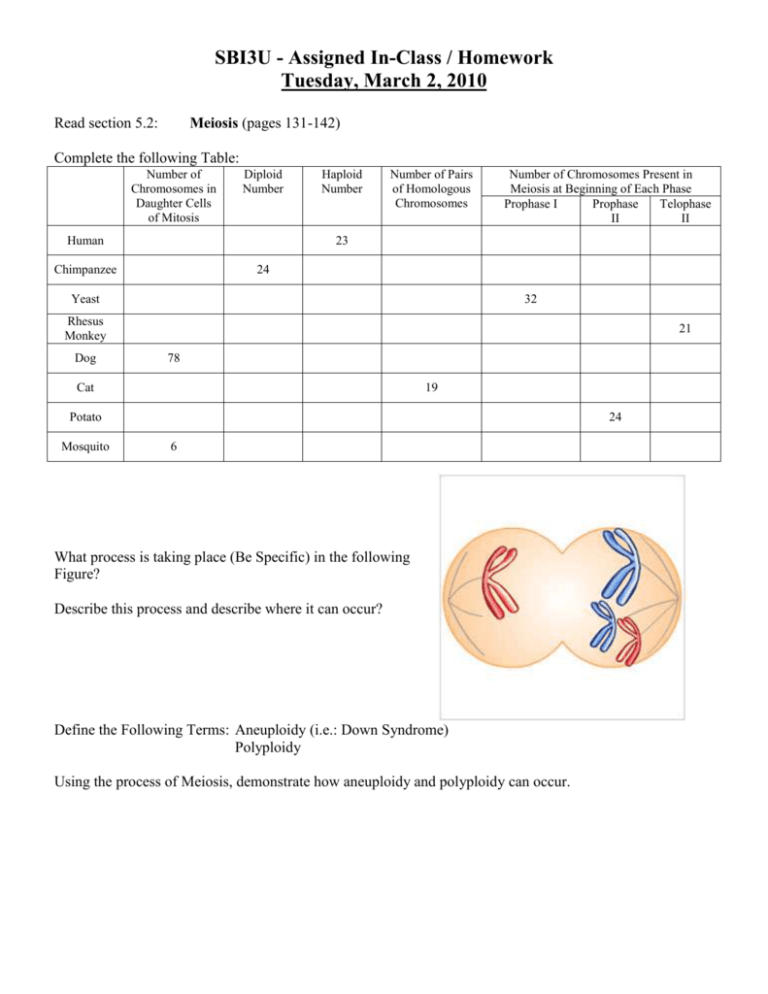
SBI3U - Assigned In-Class / Homework Tuesday, March 2, 2010 Read section 5.2: Meiosis (pages 131-142) Complete the following Table: Number of Chromosomes in Daughter Cells of Mitosis Diploid Number Human Haploid Number Number of Pairs of Homologous Chromosomes Number of Chromosomes Present in Meiosis at Beginning of Each Phase Prophase I Prophase Telophase II II 23 Chimpanzee 24 Yeast 32 Rhesus Monkey Dog 21 78 Cat 19 Potato Mosquito 24 6 What process is taking place (Be Specific) in the following Figure? Describe this process and describe where it can occur? Define the Following Terms: Aneuploidy (i.e.: Down Syndrome) Polyploidy Using the process of Meiosis, demonstrate how aneuploidy and polyploidy can occur. The following is a Figure of a Normal Human Karyotype (page 186 of text). What sex is the individual and why? What would the opposite sexes karyotype look like? Label the following Human Karyotypes as: Monosomy, Trisomy and Triploidy and give a reason why you named them the way you did: Describe the type of Chromosomal mistakes that have taken place in the following Figures: Understand Table 5.2: Mitosis and Meiosis Comparison. Starting with a cell that is diploid (2n = 6), demonstrate using 3 alleles per chromosome (see definition of alleles page 157), how all 4 haploid cells are different genetically from their parent cell. (Use the traits below to demonstrate) – need to incorporate Random Assortment and Crossing-over. i.e.: chromosome 1 / 2 : Blue (b) eyes vs Brown (B) eyes; Tall (T) vs Short (t); Tongue Roller (R) vs Non-tongue roller (r) chromosome 3 / 4: Have freckles (F) vs No freckles (f) Widow’s peak (W) vs Straight hair line (w) Free-hanging earlobe (E) vs Attached earlobe (e) chromosome 5 / 6: Cleft chin (C) vs No cleft chin (c) Hitchhiker’s thumb (H) vs straight thumb (h) Dimples (D) vs No dimples (d) Define: Cancer What is the difference between a Benign tumour and a Malignant tumour. Why is a malignant tumour more dangerous than a benign tumour? Answer Page 142: Understanding Concepts: Applying Inquiry/Communication Skills: Read Section 5.3: 3, 4, 6, 7, 9 11, 12 Sexual versus Asexual Reproduction (Pages 143 – 146) Answer Page 146: Understanding Concepts: Applying Inquiry/Communication Skills: 1, 2, 6 7

